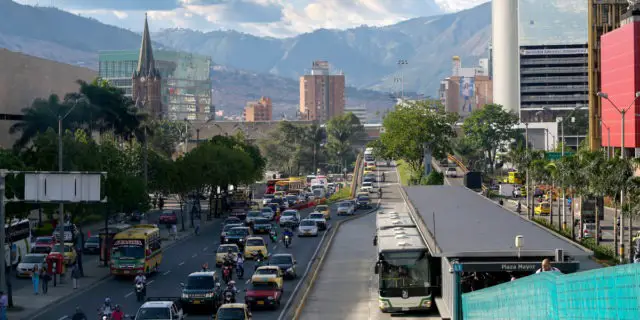Spain and its companies learned to be international in Latin America. There, they also assimilated that what was important was not a country but the region as a whole. And, in parallel, many family businesses in the region became multi-Latinas and years ago began to invest in our country, opening the era of ‘multi-Ibero-American’ companies. Rebeca Grynspan, Ibero-American Secretary General, often states repeatedly that “when they ask me if Ibero-America exists, I answer them: ask the companies”.
There is some heroicity in how entrepreneurs are facing this crisis
A friend told me recently that this is not the time to get bombastic in the business world. What is not about being heroes, but doing what needs to be done. But I do believe that there is some heroicity in the struggle and in the generosity with which the businessmen are facing this crisis. From the Alliance for Ibero-America Business Council (CEAPI), we have seen how each businessman seeks to help the country and the most disadvantaged. We have started collecting social engagement initiatives and the response has been overwhelming.
And this while, at the same time, entrepreneurs work more than ever to protect their companies and their teams. They have had to cope with the pressure and a “gray cloud”: the feeling that the bigger the company, the more countries it has a presence, the more problems.
Today I want to share the thesis of Germán Ríos, for many years an economist at CAF; today, an IE Professor and Senior Partner of ATREVIA. Latin America presents weaknesses in the face of this crisis, weak health systems, States with limited resources, a large group of the population in a disadvantaged situation… But Latin America also has strong points to face this blow.
Depending on the recovery pace, new investment options will be opened in the region
The coronavirus pandemic phenomenon has produced a negative supply shock that has been transmitted through demand restrictions (to control its spread) and cuts in supply chains, exacerbating the impact on supply itself. It is clear that this will produce a global recession, especially acute in Europe and the USA. Latin America does not escape this reality, but it has a series of advantages that could cause the economic recovery to be faster than in other parts of the world. As happened in the global financial crisis that started in 2008, when Latin America suffered a 2% drop in GDP, but the region managed to recover, grow to 6% in 2010 and become a global locomotive.
Having a relatively young population, being less internationally connected than Europe and the US; having taken relatively quick and strict containment measures; having learned how to handle external economic shocks over the past decades; having adopted measures to protect families and SMEs using existing social programs, together with the recovery of China, which will boost demand for raw materials and their prices, foresee a relatively faster economic recovery in Latin America than in the US and Europe.
This could be positive for “multi-Latin American” and transnational companies -especially Spanish ones- that already operate in the region. Depending on the speed of the recovery, new opportunities for expansion and investment could be opened in Latin America and for the return of financial capital.

Latin America had a mediocre economic performance in 2019, with GDP growth of just 0.1%, according to the Economic Commission for Latin America (ECLAC). Before the outbreak of the pandemic, the projected expansion for the region in 2020 was a meager 1.3%, driven mainly by the recovery of the continent’s two largest economies, Brazil and Mexico. Although it is extremely difficult to estimate the impact of the coronavirus on growth, various analysts argue that it could be in the order of a recession of between -2.5% and -5.2% in 2020.
The main transmission channels of the COVID-19 crisis to Latin America are the reduction in exports (both due to the drop in the prices of raw materials and demand, after the drop in activity of its major trading partners); disruption of global value chains; capital outflows seeking safe assets (especially to the US), which has caused currency devaluations and financing problems; the collapse of tourism, which mainly affects Central America, the Caribbean and Mexico; the decrease in migrant remittances due to the global crisis and the collapse in the supply and demand of services due to the restrictions imposed to control the pandemic.
Although Latin America does not have the same health training as that of developed countries, it has some advantages in the fight against the pandemic. Firstly, the age structure of the population is much younger than in the European Union and the US. While in Latin America the average age is 31; in the EU it is 43 and in the US, 38. And, in some countries, COVID-19 has meant a reinforcement of political stability such is the case of Chile, where the population is recognizing the president Piñera for his management skills. Second, the region is less internationally connected than the industrialized countries and can learn from good and bad practices in the fight against the pandemic, since it later got there.
Another positive aspect is how fast most Latin American governments have acted with respect to containment measures, learning from the experience of other countries. For example, Chile and Brazil decreed the closing of schools at 12 and 21 days, respectively, once the first case was confirmed. In Spain and Italy, this measurement was taken 41 and 33 days after the first detected case. Similarly, most countries in the region closed their borders, declared a state of emergency, suspended massive events, quarantined highly affected regions, imposed curfews, and closed cinemas, bars, restaurants, and sporting events more quickly than the US and part of Europe.

From an economic point of view, Latin America is a region used to dealing with negative external shocks, and although the coronavirus does not arrive at the best time, the region has some advantages to mitigate the impact of the shock. The most relevant are that most countries have flexible exchange rates that help them absorb the impact of capital outflows, low inflation, which allows for expansionary monetary policy, high levels of international reserves that can be used during the emergency and, in some cases, some fiscal space to carry out counter-cyclical policy.
It is also surmised on the horizon that Latin America could benefit from reorganization by the multinationals of the supply chains that, until now, have been highly concentrated in China and other parts of Asia: part of them could migrate to the region.
Regarding economic policies to mitigate the effects of the crisis on people and companies (especially SMEs), they have been implemented quickly and within the possibilities of each country. It is worth noting the effort in immediate emergency plans and future economic reactivation in Peru and Chile, but also Colombia, Argentina and Mexico have worked with some haste in the adoption of programs. These policies include direct transfers to the most affected groups, payment facilities for public services, rentals and financial commitments to families and companies, and postponement or reduction of tax obligations.
Despite having little fiscal space, most governments are acting decisively to mitigate the negative effects of reduced economic activities to stop the expansion of the coronavirus. It is important to note that Latin America has been innovative in the design and implementation of social programs, especially of the type of conditional transfers, which makes it easier to implement additional measures, although high levels of informality are a huge challenge. In fact, 130 million workers have informal jobs, 53% of the employed population, and need a speedy recovery.
Finally, there is good news from the region’s main trading partner: China, vital for South America’s exporting lung. That country gradually begins to return to normal and some indicators show the first signs of recovery. For example, activity in manufacturing and consumption has begun to rebound, although services do so more slowly.
An advantage of Latin America is being the world’s pantry, and China is one of its major food markets, so it will favor the prompt recovery of that country. Several analysts expect China to implement various measures to accelerate the recovery, such as further monetary expansion and increased investment in infrastructure.
This is positive for Latin America, because it implies an increase in the demand for raw materials and their prices, which would mainly benefit food and mineral exporters in the Southern Cone, thus mitigating the impact of COVID-19. In the case of Mexico, Central America, and the Caribbean, where dependence on the US is greater, the recovery could be slower.

